September 2022
Part 1 - AW101 Merlin HM.1
Part 2 - Grumman Avenger AS.4
Link to Website Index: 
Grumman TBM-3E Avenger AS.4
815 Naval Air Squadron, HMS EAGLE , Mediterranean, 1954
Airfix 1/72 with Xtradecal markings.
Link to Website Index: 
In contrast to today's sohisticated ASW Merlin helicopters, 70 years ago the Grumman
Avenger AS.4 was the RN's main ASW aircraft.
A variant of the US Navy's TBM-3E Avenger, supplied to the RN under the US Mutual
Defence Assistance Programme (MDAP), the TBM-3E was modified from the wartime Avenger
to incorporate operating lessons and especially to reduce weight - the 3E was nearly
a ton lighter than its predecessor.
One hundred aircraft were delivered from 1953 as the Avenger AS.4 to fill the gap
between withdrawal from service of the Fairey Firefly and Barracuda until the delayed
introduction of the Fairey Gannet. These were followed by 80 more updated AS.5 aircraft,
with all serving in first line squadrons until 1955, after which they remained with
RNVR units until the RNVR air branch was disbanded.
Building the Airfix Grumman Avenger Kit:
This kit was a "cheapy buy" of a dirty plastic bag full of unidentified kit parts
for the grand sum of £3.50. It's the ancient (1966) Airfix TBM-3 Avenger kit, this
one from a 1995 Airfix re-issue with decals for an RN Avenger III of 703 Sqn at RNAS
Ford in the early 1950s (incidentally, the same aircraft covered by the Freightdog
Decals “Yanks With Roundels”, albeit with an skull & crossbones on the tail and dated
1946). 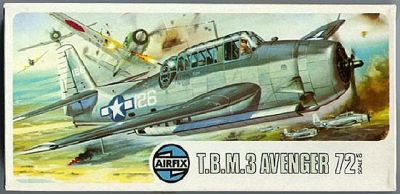
The kit has the modified cowling of an Avenger III (lower chin intake and extra cooling
flaps), but the Observer's square lower rear windows are not correct for British
Avengers/Tarpons, which had round bulged dome windows. An easy soloution is to build
it as an AS.4 (also based on the TBM-3E). These later aircraft were hurriedly supplied
in 1953, under the Mutual Defence Assistance Plan to back-fill the delayed introduction
of the Fairey Gannet and replace the Barracuda and Firefly. The initial AS.4s were
largely drawn from US stocks, hence the US-style windows. They stayed in front-line
service until 1955, with a few remaining beyond this with RNVR squadrons. Decals
for one of these are provided in the Xtradecal 815 Sqn set and it is this that I
have gone for (I'll do a TBM-3E / Avenger III later when I can work out how to make
some round windows!).
I kicked off with a small modification that probably wasn't worth the effort, but
was easy to do - I added some sprue-based side consoles in the front cockpit. The
rest of the kit goes together much as you would expect of an Airfix kit of that era
- it fits. Not well, not badly, but well enough. Mine seemed to be a good sharp
moulding in soft light plastic with minimal flash, which helped. The clear parts
were good, although it does eeem to me that the main canopy is a little too proud,
certainly compared to my two other Avenger kits (FROG and Academy). There are rivets
everywhere, but these are easy to sand down a little (but not entirely - see the
real thing!). Of course, the kit has the US-style centre cockpit (i.e. not a cockpit),
which was changed in the RN machines to reflect the different and more significant
role of an RN Observer. I made some very small changes in this area, but nothing
much, for two reasons - firstly I'm not sure the early AS.4s were actually changed,
and secondly, you can't really see anything through the cockpit frames !Italeri/


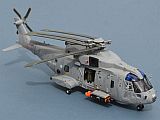
Rivets everywhere !
One of the distinctive features of this kit is the liberal spread of overscale rivets
across its entire surface. These are clearly too big, and I snaded most of them
off, but wherever I could I left some sign of their existence, because, believe it
or not, the real thing does have a liberal spread of rivets across most of its surface!
The wings are perhaps the smoothest area, but in several parts of the fuselage,
the rivets are quite large, as the following pictures will show.
Another noticeable difference between the Airfix kit and many others is the lack
of the regular vertical fuselage join lines. Again, this si not completely wrong
- a close examination of pictures will show that these joints/lines definitely exist,
but are very difficult to see, and certainly not as noticeable as on the FROG and
Academy kits. This is particularly so with the semi-gloss blue finish of the later
Avengers. Interesting !
Background: A superbly restored Avenger displays at the RNAS Yeovilton Air Show
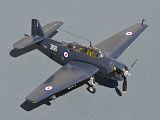
Part of my reason for Choosing the 815 Sqn aircraft was to allow me to use the kit’s
provided rocket armament - by the 1950s, the use of aircraft launched anti-ship torpedoes
was largely a thing of the past and torpedoes hadn't yet evolved far enough to be
a real threat to attacking submarines, so Avengers of this era used rockets, depth
charges and dumb bombs as their main armament. I also painted over the rear gunner's
lower position - on RN aircraft, these were replaced during WW2 with a camera, then
removed entirely on later aircraft. For the starboard wing ASH radar pod, I used
a part from my spares it, trimmed down slightly to size.
Exterior paint is Humbrol 104 enamel (2 coats). For the interior, I used Humbrol
interior green, all brush applied of course. I have seen modellers use black for
the interior of later aircraft, but I have based my choice on a quick peek inside
the Avenger at the Fleet Air Arm Museum, which pretends to be a WW2 aircraft, but
was actually a post-war TBM-3E (AS.5), later converted to an ECM AS.6. A coat of
Klear helped the decals to settle, then was followed by some light colour oil washing
in the engraved detail and a top coat of satin varnish to finish. So far as I can
see, the AS.4s were kept very tidy (even those being scrapped look pristine), so
I have not applied the weathering or chipping that might be seen on a wartime aircraft.
The Xtradecal markings went on relatively easily, although their thinness caused
me a few issues with the "J" on the starboard tail, which was determined to curl,
then snapped in two as i realigned it.
This was a fun build, without any particular expectations for the completed model,
but I am pleased with the way it has turned out. The kit may be an oldie, but it
is still worth a pop !

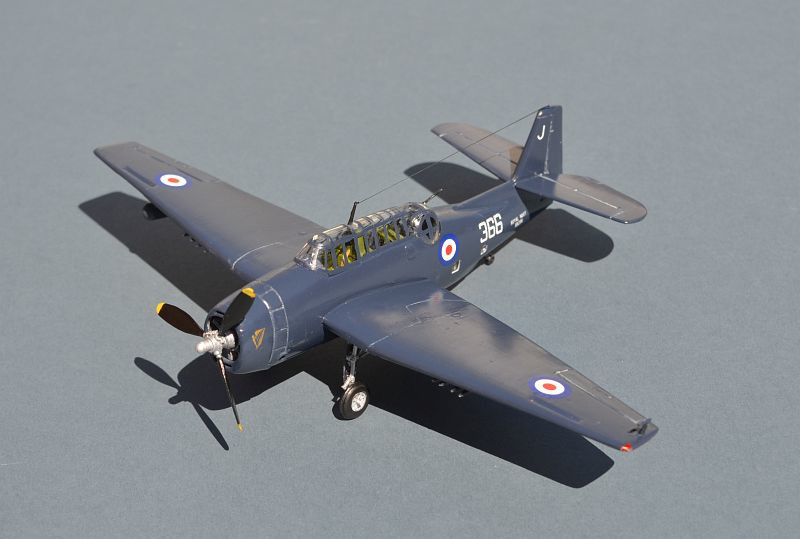
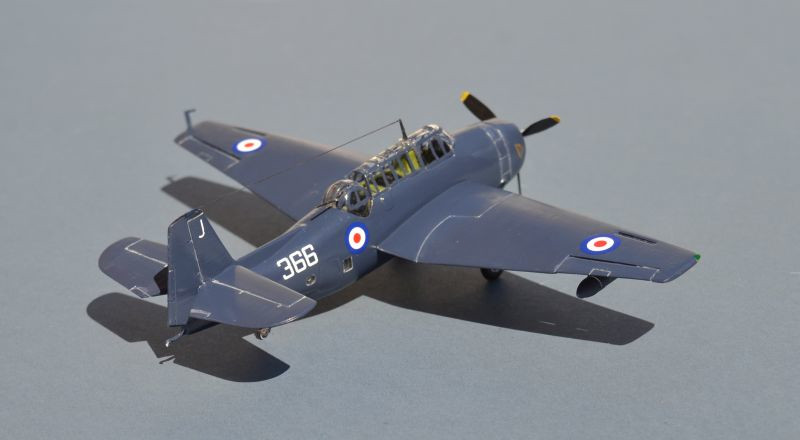



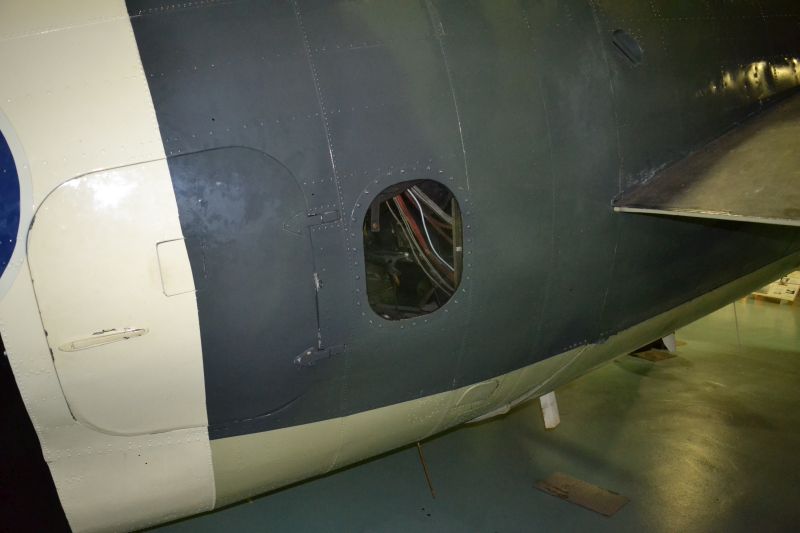
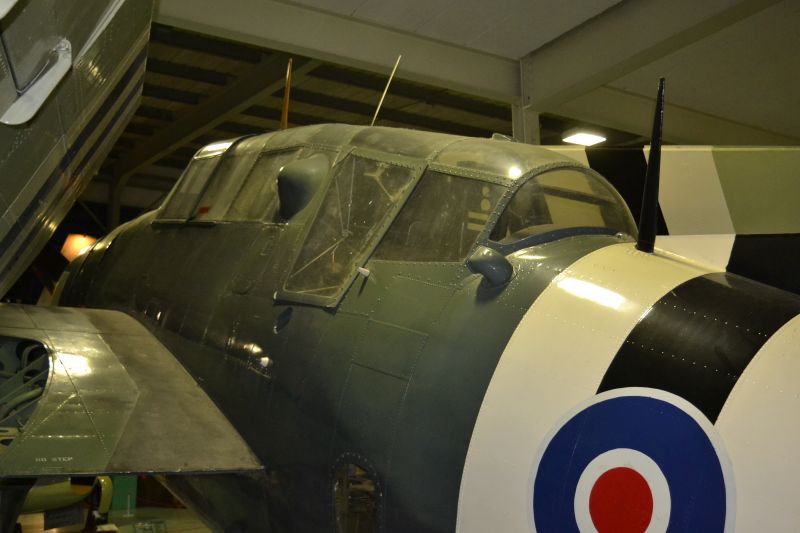

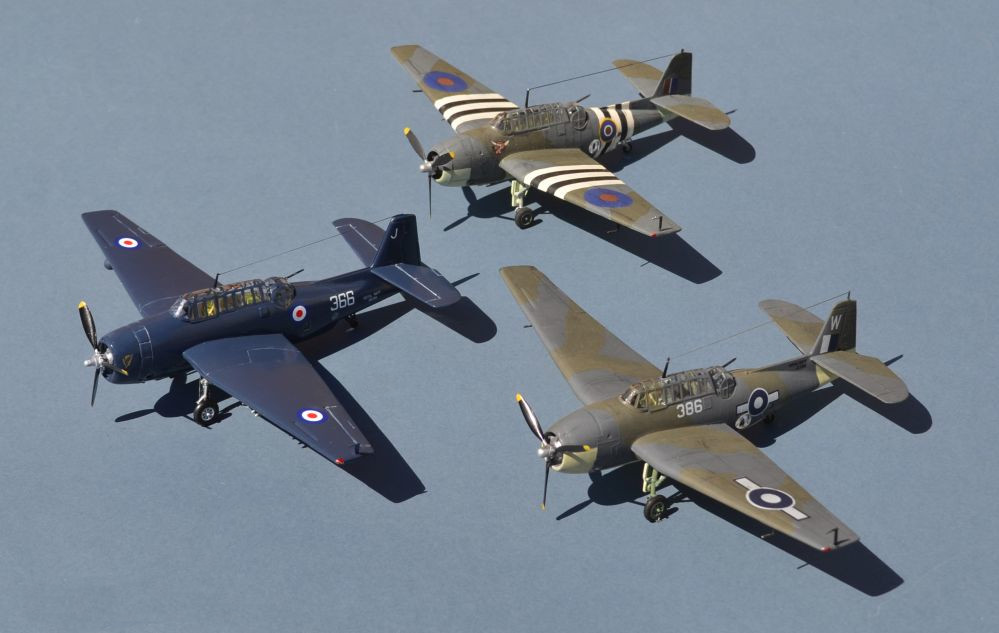
Below: with my other Avenger kits. From Left to right - Airfix, Academy and FROG
These and more can be seen on my RN Props pages












